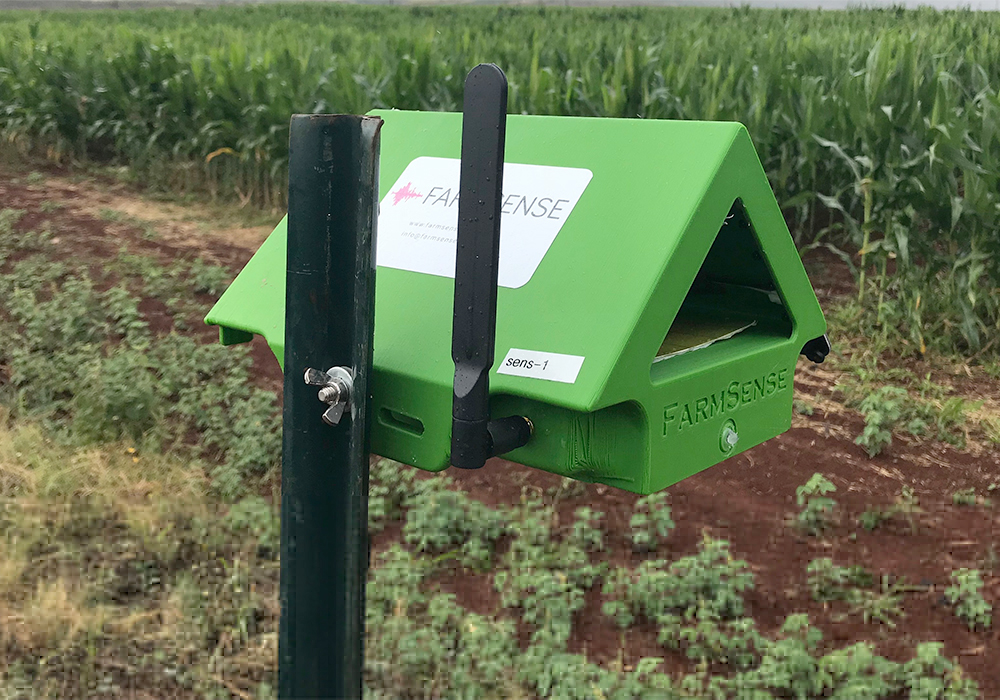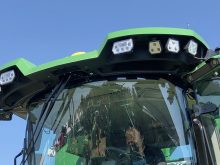A co-founder of a unique insect sensor that’s placed in agricultural crops recently won an IEEE Data Mining Award.
Eamonn Keogh of FarmSense won the award, and he said data mining is typically done in research fields such as neuroscience, astronomy or in areas with readily accessible data sets like consumer trends.
“No one had done competition entomology surprisingly until we started this academically about 10 years ago,” Keogh said.
“A lot of professors go after the low-hanging fruit like examining Google advertisements and Twitter.”
Read Also

U.S. bill could keep out Canadian truckers
The Protecting America’s Roads Act, which was tabled in the U.S. House of Representatives at the beginning of October, would “rid the country of illegal immigrant commercial truck drivers and ineligible foreign nationals.”
It was much more difficult to run computations on insect behaviour compared to data mining existing data sets, largely because FarmSense had to build the data sets on insect behaviour.
Plus, a background in entomology was needed before meaningful insect data could be collected.
To collect the insect data, FarmSense built a sensor called FlightSensor that has been designed to help farmers identify harmful insects in their fields in real time by classifying insects by the sound they make.
When bugs arrive at the trap, they fly through a curtain of light at the opening.
Each sex and species of bug causes a specific disruption pattern in the light curtain.
The sensor tracks the movement of an insect’s wing beats with a laser and a phototransistor array, and then converts the disruption to a sound file, which FarmSense then processes with algorithms capable of identifying the bug associated with the sound.
“We have a kind of microphone but it actually records sound bites with light, not the actual sound. We call it pseudo acoustic,” Keogh said.
He said the sounds insects make when in flight vary considerably between species, but it is difficult to use microphones in field-based sensors because of environmental noise, primarily wind.
The machine-learning based algorithms can detect more information than just how fast the wings are beating to help differentiate specific bugs.
The information is pushed to the cloud, and it can then be used for data mining purposes.
“For the last several years, we’ve been taking insect larva, put them in a cage with our sensor, and let them hatch. We watched them from birth to death, 24 hours a day under different temperature and lighting conditions, air pressure, hungry versus not hungry and so forth,” Keogh said.
He said other automated in-field insect sensors use sticky traps and cameras that send in images a few times a day, which then need to be counted. But these systems don’t tell you when the bug arrived, and the traps are ineffective when they are dirty or get saturated full of dead bugs.
“So almost all of them (competitors) basically have a sticky trap and they put a camera in front of it. Once it takes a photograph, that image goes to an algorithm or actually in many cases, I think secretly to a human being in the Philippines or Thailand who counts the insects and that goes into your database,” Keogh said.
The FlightSensor can identify the bugs and when they arrived. The bandwidth required to send this information to the cloud is much smaller compared to sending in a video or image.
FarmSense has also developed sensors capable of detecting walking bugs that FlightSensor can’t identify.
For instance, it has a sensor that clips onto above ground PVC piping that can be used to estimate the number of ants present on a field.
Monitoring ant populations can be important when it comes to controlling the Asian citrus silt that causes huge problems for citrus plantations in Florida.
One way to control Asian citrus silt is to use parasitic wasps.
“But amazingly, Argentine ants act as bodyguards to the Asian citrus silt because they milk it for honeydew. So, these parasitic wasps are only possibly used if the ant population is very low,” Keogh said.
“The ants walk on a white PVC pipe that people use for irrigation almost like a freeway…. We’ve established some thresholds for their behaviour to trigger interventions to control or kill the ants and support the parasitic wasps.”
He said FarmSense has opened for series A funding to help it become commercial in 2022 and to enable it to develop more field sensors.


















